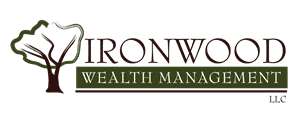Spring is here, making it the perfect time to check in on your financial health. While many people make resolutions in January, the new season is an excellent time to assess what’s working, adjust what isn’t, and set yourself up for success in 2025 and beyond.
Whether you’re a high-earning professional, a business owner, or simply someone looking to maximize your wealth, a structured, proactive approach to financial planning ensures you stay on track and don’t leave anything on the table.
Here’s your essential 2025 financial health checklist to help you make the most of your money this year.
Step 1: Assess Your Financial Health
Before making improvements, you need a clear picture of where you stand. Here’s how to evaluate your financial health across key areas:
Check Your Investment Portfolio
Review your portfolio performance. Look at your investments, their returns, and how they align with your financial goals.
Assess diversification. Is your portfolio spread across different assets like stocks, real estate, and fixed income to manage risk?
Analyze your risk tolerance. If market volatility makes you uneasy, you may need to rebalance your investment strategy.
Review Your Tax Situation
Examine last year’s tax return. Were you surprised by a high bill or a big tax refund? Consider adjusting your tax withholding accordingly.
Evaluate deductions and credits. Are you taking advantage of tax deductions from retirement contributions, a charitable trust, or education expenses?
Check estate tax implications. If you have significant wealth, review your estate planning strategy to minimize tax liabilities, especially with major changes like the TCJA sunset on the horizon.
Evaluate Your Retirement Readiness
Check your contributions. Are you maximizing your 401(k), IRA, or Roth IRA to build long-term savings?
Estimate future expenses. Consider health care, long-term care, and other costs in retirement planning.
Review your withdrawal strategy. If you’re near retirement, determine the best approach to sustain income while managing taxes.
Assess Your Risk & Insurance Coverage
Review your policies. Ensure your life insurance, health insurance, disability insurance, and long-term care policies align with your needs.
Check liability protection. Do you have enough home insurance, an umbrella insurance policy, or business liability coverage?
Evaluate fraud protection. With rising cybercrime, ensure you have strong security measures in place to protect your money.
Check Your Credit & Debt Levels
Review your credit score. Monitor your credit history and check for inaccuracies that could impact borrowing options.
Assess outstanding debts. Identify high-interest rate debts, such as credit card debt, and evaluate if debt consolidation makes sense.
Ensure a healthy emergency fund. Do you have three to six months’ worth of expenses in a savings account?
Step 2: Improve Your Financial Outlook for 2025
Once you’ve assessed your financial health, take steps to optimize your financial plan and set yourself up for growth and security.
Optimize Your Investments
Rebalance your portfolio. Adjust asset allocations to align with your financial goals and market conditions.
Consider alternative investments. Private equity, REITs, or commodities may diversify your income streams, risk tolerance allowing.
Work with a financial professional. A registered investment adviser can help fine-tune your strategy for growth.
Maximize Tax Efficiency
Utilize tax-saving strategies. If you expect higher taxes in the future, consider Roth IRA conversions or tax-loss harvesting.
Boost your charitable impact. Structured donations through a donor-advised fund or a charitable trust can reduce tax burdens.
Plan for future tax changes. Work with a tax advisor to adjust your approach based on policy updates.
Strengthen Your Retirement Planning
Increase retirement contributions. Take full advantage of employer-sponsored employee benefits and employer-matching programs.
Factor in inflation. Rising costs impact your retirement savings, so adjust your plan accordingly.
Consider health care costs. Long-term care planning is key to protecting your savings and avoiding financial strain.
Improve Credit & Debt Management
Pay off high-interest debt. Focus on reducing credit card debt and loans with excessive interest rates.
Refinance when it makes sense. If mortgage or loan rates have dropped, explore refinancing to reduce monthly expenses.
Build credit strategically. Even with a strong credit score, optimizing credit can enhance financial flexibility. Consider leveraging credit for investment purposes or exploring credit card rewards tailored to your spending.
Protect Your Wealth & Assets
Review your estate plan. Ensure your estate plan, trusts, and beneficiary designations are up to date.
Reassess insurance coverage. If your home insurance, life insurance, or other policies are outdated, upgrade them.
Diversify your income sources. Explore additional income streams like real estate, stock dividends, or a small business to enhance financial resilience.
Take Action Today for a Healthier Financial Future
A financial health check isn’t just a to-do list; it’s a roadmap to greater security, growth, and peace of mind. By proactively addressing these key areas, you can make informed decisions that set you up for a successful 2025 and beyond.
Not sure where to start? Ironwood Wealth Management is here to help. Schedule a consultation, and let’s discuss how we can help you update or develop a comprehensive financial plan, optimize your investments, and ensure you’re on track to achieve your financial goals.





